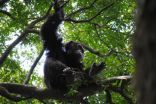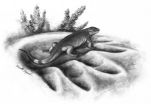(Press-News.org) Changing where a newborn baby is held before its umbilical cord is clamped could lead to improved uptake in hospitals of delayed cord clamping, leading to a decreased risk of iron deficiency in infancy, according to new results published in The Lancet.
Delaying clamping of the umbilical cord until around two minutes after birth allows for blood to pass from the mother's placenta to the baby, and has previously been shown to reduce the risk of iron deficiency in infancy.
However, current recommendations – based on studies conducted 35 years ago – suggest that for effective placental transfusion to occur, the baby needs to be held at the level of the placenta (introitus position), which is cumbersome, uncomfortable for the person holding the baby, and interferes with immediate contact between mother and baby.
Since these issues could be contributing to low compliance with this procedure in hospitals, ultimately resulting in higher than necessary levels of iron deficiency in babies and children, a group of researchers in Argentina tested whether the transfer of blood in delayed cord clamping procedures is affected by the position in which the baby is held immediately after birth.
In the study, which was conducted in three university affiliated hospitals in Argentina, 197 babies were held in the introitus position while undergoing delayed cord clamping, as per usual practice, but 194 babies were instead immediately placed on the mother's abdomen (tummy) or chest.
By measuring the babies' weights at the point of birth, and immediately after the delayed cord clamping procedure, the researchers were able to measure the volume of blood which had transferred from the placenta to the child.
They found no statistically significant difference between the two groups in the volume of blood transferred, indicating that placing the baby on the mother's chest or abdomen is no less effective than the more awkward introitus position in delayed cord clamping procedures.
According to lead author Professor Nestor Vain, of the Foundation for Maternal and Child Health (FUNDASAMIN) in Buenos Aires, Argentina, "Iron deficiency in newborn babies and children is a serious public health problem in low-income countries, and also prevalent in countries from North America and western Europe. Our study suggests that when umbilical cord clamping is delayed for 2 minutes, holding the baby on the mother's chest or abdomen is no worse than the currently recommended practice of holding the baby below this level. Because of the potential of enhanced bonding between mother and baby, increased success of breastfeeding and the compliance with the procedure, holding the infant by the mother immediately after birth should be strongly recommended."*
Writing in a linked Comment, Dr Tonse Raju of the Eunice Kennedy Shriver National Institute of Child Health and Human Development, Bethesda, USA, says, "Introduction of delayed cord clamping into practice has been sporadic, with logistical issues being one possible reason. Intuitively, to keep the newborn baby's position below the level of the placenta in situ should maximise the volume of placental transfusion. However, trying to hold on to a wet, vigorously crying, and wriggling infant at the perineum for 2 min, in gloved hands, is awkward and can be risky. When the mother is waiting anxiously to hold her baby and the father is taking photographs, 2 min could seem like an eternity."
Dr Raju adds that "The study by Nestor Vain and colleagues in The Lancet should bring a sigh of relief from those trying to incorporate delayed umbilical cord clamping into practice…The results are convincing and show that gravity did not have an effect on volume of placental transfusion."
INFORMATION:
NOTES TO EDITORS:
The study was funded by the Foundation for Maternal and Child Health (FUNDASAMIN).
* Quote direct from author and cannot be found in text of Article
The Lancet: Changing where a baby is held immediately after birth could lead to improved uptake of procedure that reduces infant iron deficiency
2014-04-17
ELSE PRESS RELEASES FROM THIS DATE:
Chimpanzees prefer firm, stable beds
2014-04-17
Chimpanzees may select a certain type of wood, Ugandan Ironwood, over other options for its firm, stable, and resilient properties to make their bed, according to a study published April 16, 2014 in the open-access journal PLOS ONE by David Samson from the University of Nevada and Kevin Hunt from Indiana University.
Chimpanzees use tree branches to build beds or nests in trees. They select certain tree species to sleep in more frequently than other, but the reason for selecting a particular tree is unclear. To determine whether the physical properties of trees influenced ...
In funk music, rhythmic complexity influences dancing desire
2014-04-17
Rhythmic drum patterns with a balance of rhythmic predictability and complexity may influence our desire to dance and enjoy the music, according to a study published April 16, 2014 in the open-access journal PLOS ONE by Maria Witek from University of Oxford and colleagues from Aarhus University, Denmark and Oxford University.
Many people find themselves unable to resist moving their bodies to the thumping beat of hip-hop, electronic, or funk music, but may feel less desire to dance when listening to a highly syncopated type of music, like free jazz. Researchers interested ...
New species discovery sheds light on herbivore evolution
2014-04-17
A new fossil may provide evidence that large caseid herbivores, the largest known terrestrial vertebrates of their time, evolved from small non-herbivorous members of that group, according to a study published April 16, 2014 in the open-access journal PLOS ONE by Robert Reisz from University of Toronto and Jörg Fröbisch of the Museum für Naturkunde.
The origin and early evolution of vertebrates living on land led to major changes in the structure of terrestrial ecosystems. The first appearance of herbivores played a pivotal role in this transformation, and a newly discovered ...
Research may help doctors predict who gets long-term complications from Lyme disease
2014-04-17
A team of scientists led by Johns Hopkins and Stanford University researchers has laid the groundwork for understanding how variations in immune responses to Lyme disease can contribute to the many different outcomes of this bacterial infection seen in individual patients. A report on the work appears online April 16 in PLOS One.
"Physicians have recognized for many years that Lyme disease is not a uniform disease process and can vary in outcomes," says Mark Soloski, Ph.D., a professor of medicine at the Johns Hopkins University School of Medicine and senior author of ...
Off-season doesn't allow brain to recover from football hits, study says
2014-04-17
Six months off may not be long enough for the brains of football players to completely heal after a single season, putting them at even greater risk of head injury the next season.
"I don't want to be an alarmist, but this is something to be concerned about," said Jeffrey J. Bazarian, M.D., associate professor of Emergency Medicine at the University of Rochester School of Medicine and Dentistry and lead author of the study, published in PLOS ONE.
"At this point we don't know the implications, but there is a valid concern that six months of no-contact rest may not be enough ...
Earliest ancestor of land herbivores discovered
2014-04-17
New research from the University of Toronto Mississauga demonstrates how carnivores transitioned into herbivores for the first time on land.
"The evolution of herbivory was revolutionary to life on land because it meant terrestrial vertebrates could directly access the vast resources provided by terrestrial plants," says paleontologist Robert Reisz, a professor in the Department of Biology. "These herbivores in turn became a major food resource for large land predators."
Previously unknown, the 300-million-year old fossilized juvenile skeleton of Eocasea martini is ...
Banning chocolate milk backfires
2014-04-17
ITHACA, N.Y. – To some, banning chocolate milk from elementary schools seemed like a good idea, but new Cornell University research shows that removing chocolate milk from school menus has negative consequences.
"When schools ban chocolate milk, we found it usually backfires. On average, milk sales drop by 10 percent, 29 percent of white milk gets thrown out, and participation in the school lunch program may also decrease," reports Andrew Hanks, lead author and research associate Cornell's Dyson School of Applied Economics and Management. "This is probably not what parents ...
Researchers see hospitalization records as additional tool
2014-04-17
MEDFORD/SOMERVILLE, Mass. – Comparing hospitalization records with data reported to local boards of health presents a more accurate way to monitor how well communities track disease outbreaks, according to a paper published April 16 in the journal PLOS ONE by a research team led by Elena Naumova, Ph.D., professor of civil and environmental engineering and associate dean at Tufts University School of Engineering.
In a paper titled "Hospitalization Records as a Tool for Evaluating Performance of Food and Water-Borne Disease Surveillance Systems: A Massachusetts Case Study," ...
The surprising consequences of banning chocolate milk
2014-04-17
VIDEO:
Director of the Cornell Food and Brand Lab, Brian Wansink recommends, "There are other ways to encourage kids to select white milk without banning the chocolate. Make white milk appear...
Click here for more information.
For many children eating school lunch, chocolate milk is a favorite choice. What would happen if chocolate milk were banned from school cafeterias? "Students take 10% less milk, waste 29% more and may even stop eating school meals," says Andrew Hanks, ...
Family ties in the language jungle
2014-04-17
This news release is available in German. The only linguistic data available for Carabayo, a language spoken by an indigenous group that lives in voluntary isolation, is a set of about 50 words. This list was compiled in 1969 during a brief encounter with one Carabayo family. Frank Seifart of the Max Planck Institute for Evolutionary Anthropology in Leipzig, Germany, and Juan Alvaro Echeverri of the Universidad Nacional de Colombia in Leticia, Colombia, have now analysed this historical data set and compared it with various languages (once) spoken in the region. The ...





